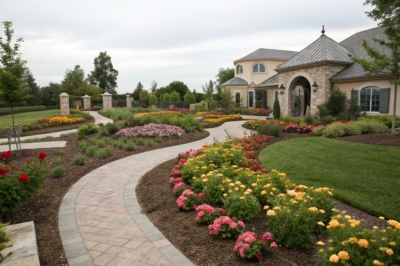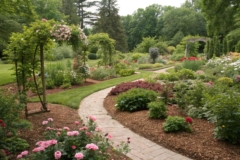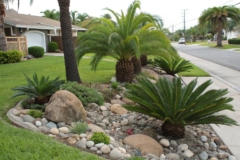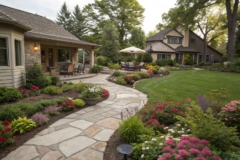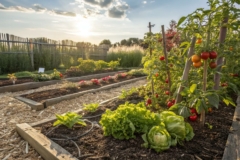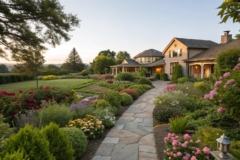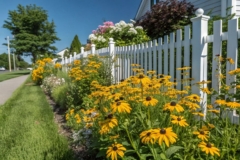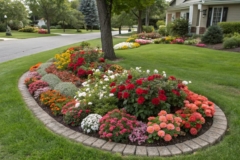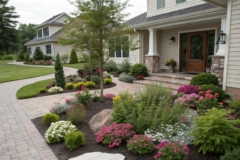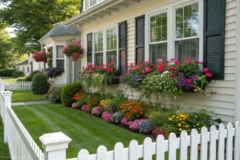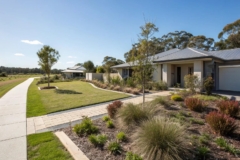1. Use Decorative Stones
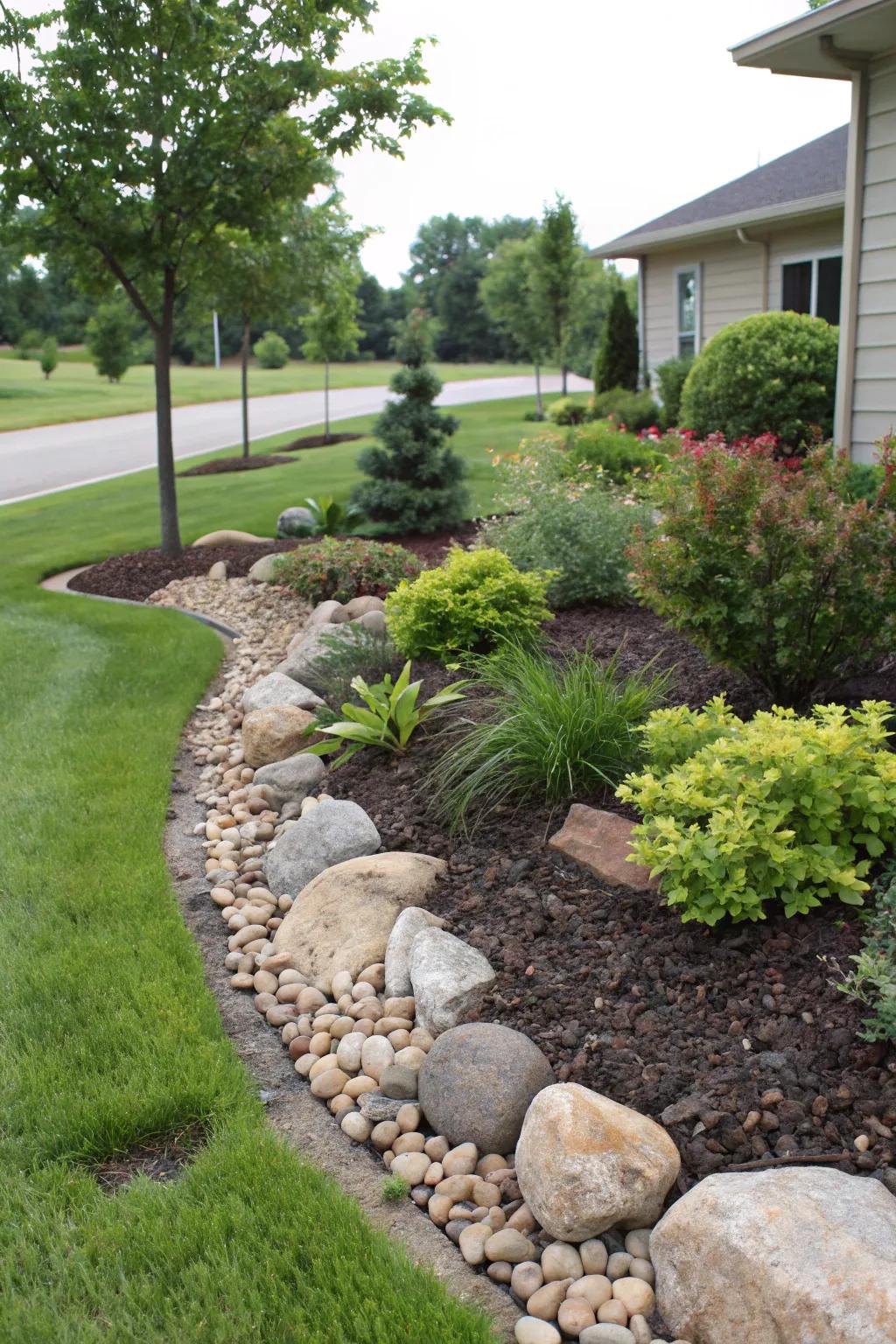
Add decorative stones or rocks within your mulch beds to enhance visual interest. I find this adds a charming, rustic touch to any garden.
Consider these options:
- River Rock Stones: Enhance your garden’s charm with smooth river rocks, ideal for a natural, elegant look.
- Garden Pebbles: Add visual interest with diverse garden pebbles, perfect for creating unique mulch bed patterns.
- Lava Rocks: Incorporate lava rocks for a striking, rustic touch that complements mulch beds beautifully.
2. Highlight with Evergreens
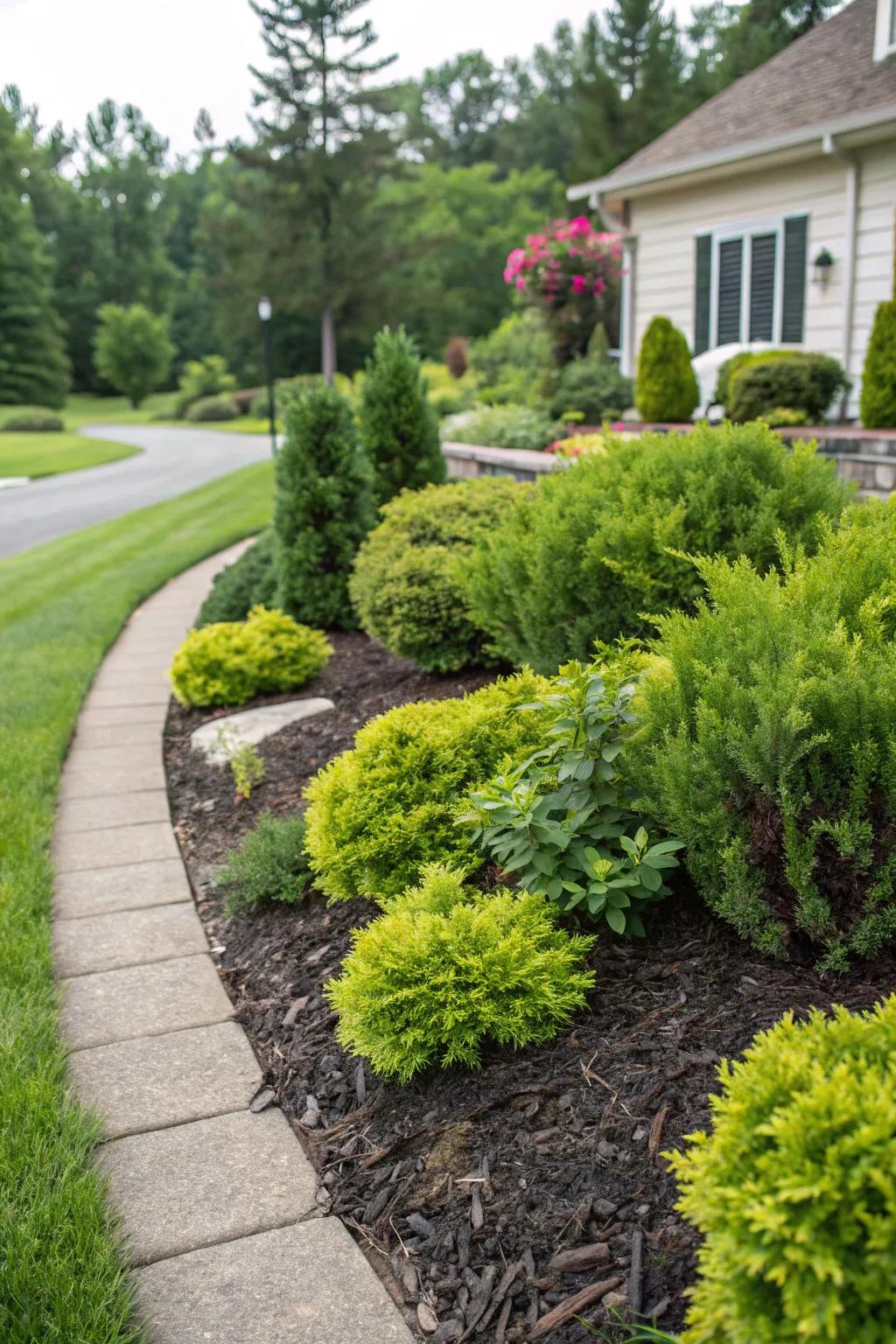
Plant evergreens in your mulch beds to ensure year-round color and structure. They’re my go-to for maintaining visual interest through the seasons.
A few helpful options:
- Evergreen Shrub Starter Pack: Enhance your garden with a variety of evergreens for lasting color and structure all year.
- Garden Mulch for Beds: Utilize high-quality mulch to protect your evergreens and create a polished, finished look.
- Slow-Release Fertilizer for Evergreens: Provide essential nutrients to ensure the health and vibrancy of your evergreen plants.
3. Build a Layered Look

Create depth with layered plantings in your mulch beds, mixing heights and textures. This technique helps me achieve a lush and dimensional landscape.
Check these products out:
- Assorted Perennial Flower Seed Pack: Enhance your garden’s texture with diverse perennials. Experience vibrant blooms across different seasons.
- Garden Soil for Flowers and Vegetables: Boost plant growth with nutrient-rich soil, perfect for creating lush layers in your landscape.
- Decorative Garden Edging Kit: Define mulch beds with stylish edging. Elevate your landscape’s structure and visual appeal.
4. Introduce Pathways
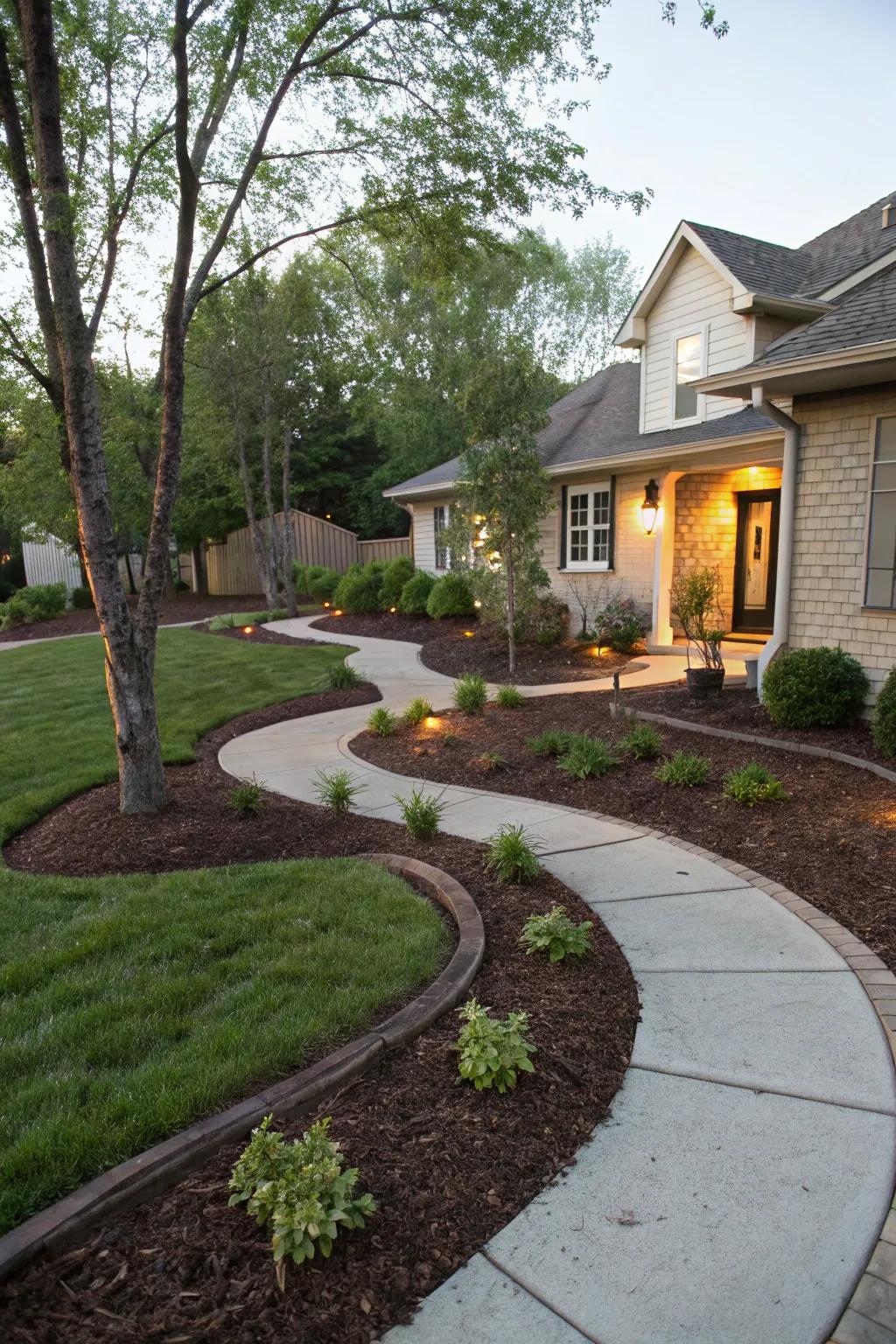
Incorporate pathways using stones or concrete next to your mulch beds for a functional and stylish touch. I often suggest this for easy navigation and added interest.
A few things you might like:
- Stone Pavers: Elevate your garden design with stylish stone pavers for a robust and elegant pathway.
- Landscape Edging Kit: Define your pathways with durable landscape edging for a polished and clean garden look.
- Solar Pathway Lights: Illuminate your garden pathways with eco-friendly solar lights for an inviting evening ambiance.
5. Use Eco-Friendly Mulch
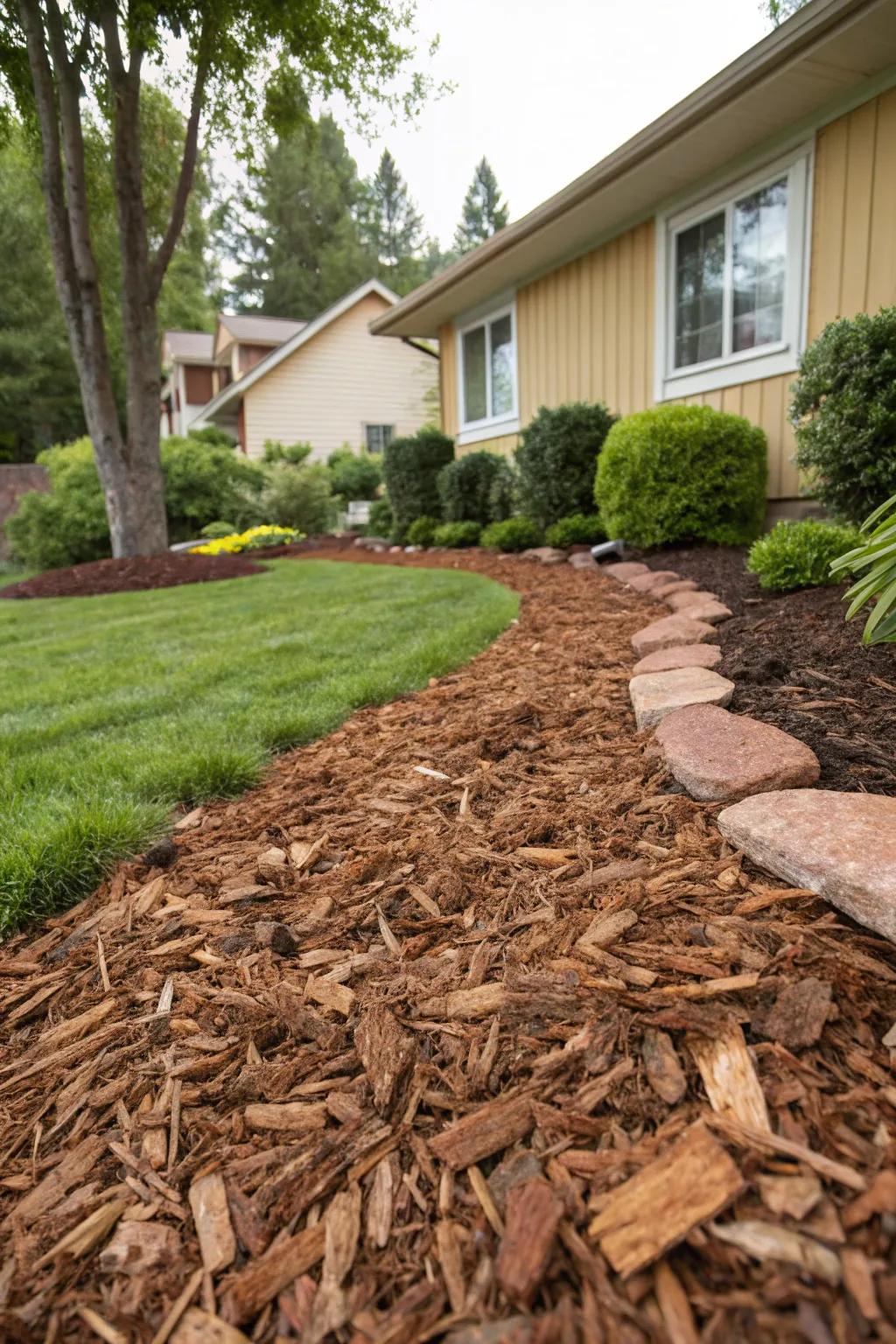
Opt for eco-friendly mulch options like wood chips or leaves to nourish your soil naturally. I’m all about sustainable choices that benefit both the garden and planet.
A few suggestions:
- Organic Wood Chips Mulch: Enhance your garden’s look naturally with organic wood chips, enriching soil and reducing weeds.
- Natural Leaf Mulch: Upgrade your garden with natural leaf mulch, promoting soil health and a sustainable environment.
- Eco-Friendly Bark Mulch: Opt for eco-friendly bark mulch to naturally protect and nourish your garden spaces.
6. Create an Herb Border
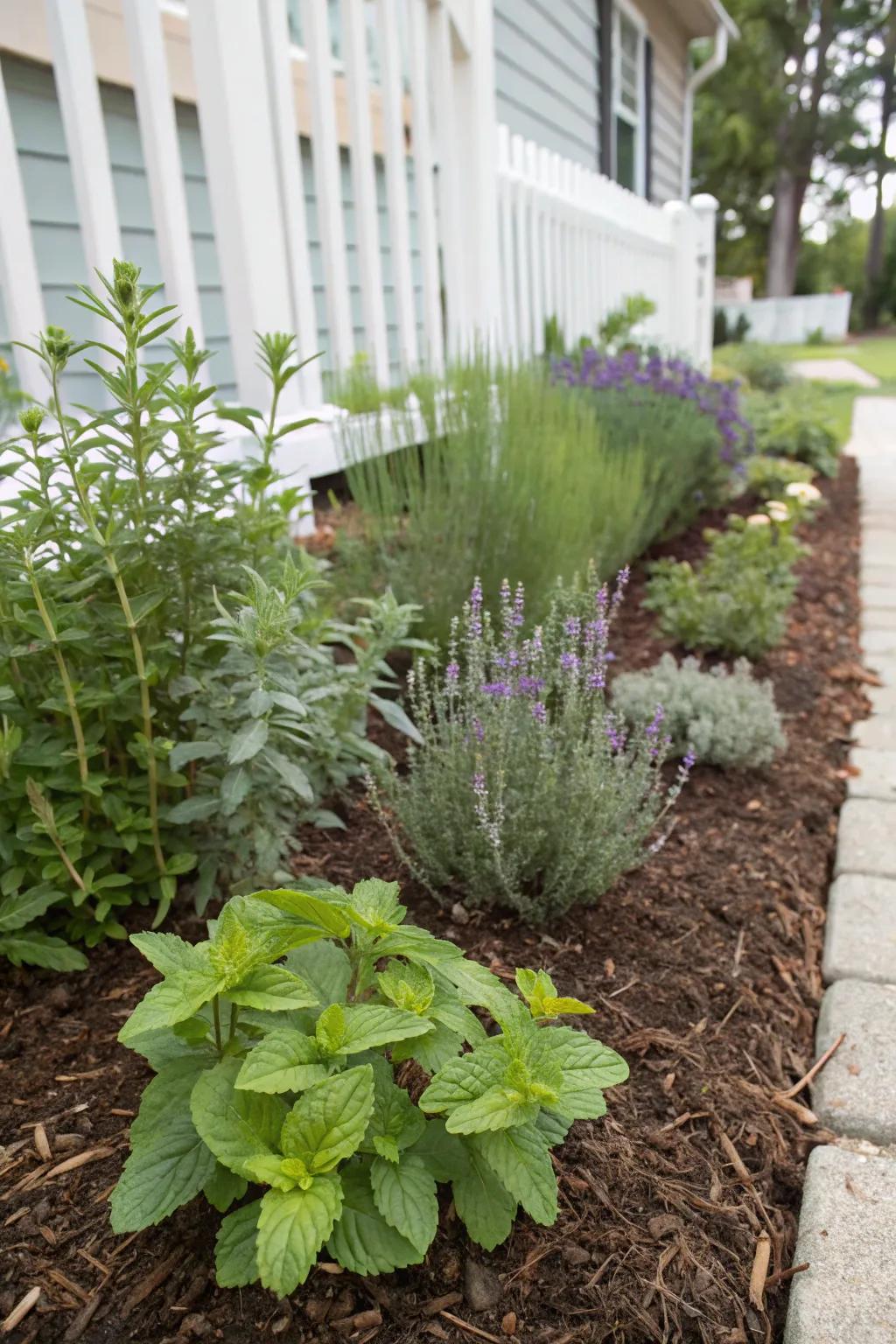
Plant herbs along the edge of your mulch beds for a fragrant and functional border. I adore this idea for its practicality and delicious aroma.
Check if these fit your needs:
- Herb Seed Starter Kit: Start your herb garden easily with a comprehensive seed starter kit. Perfect for beginners!
- Organic Potting Soil: Enhance herb growth with rich, organic potting soil designed for aromatic and healthy plants.
- Gardening Hand Tools Set: Equip yourself with essential gardening tools for easy planting and maintenance of your herb bed.
7. Design with Symmetry
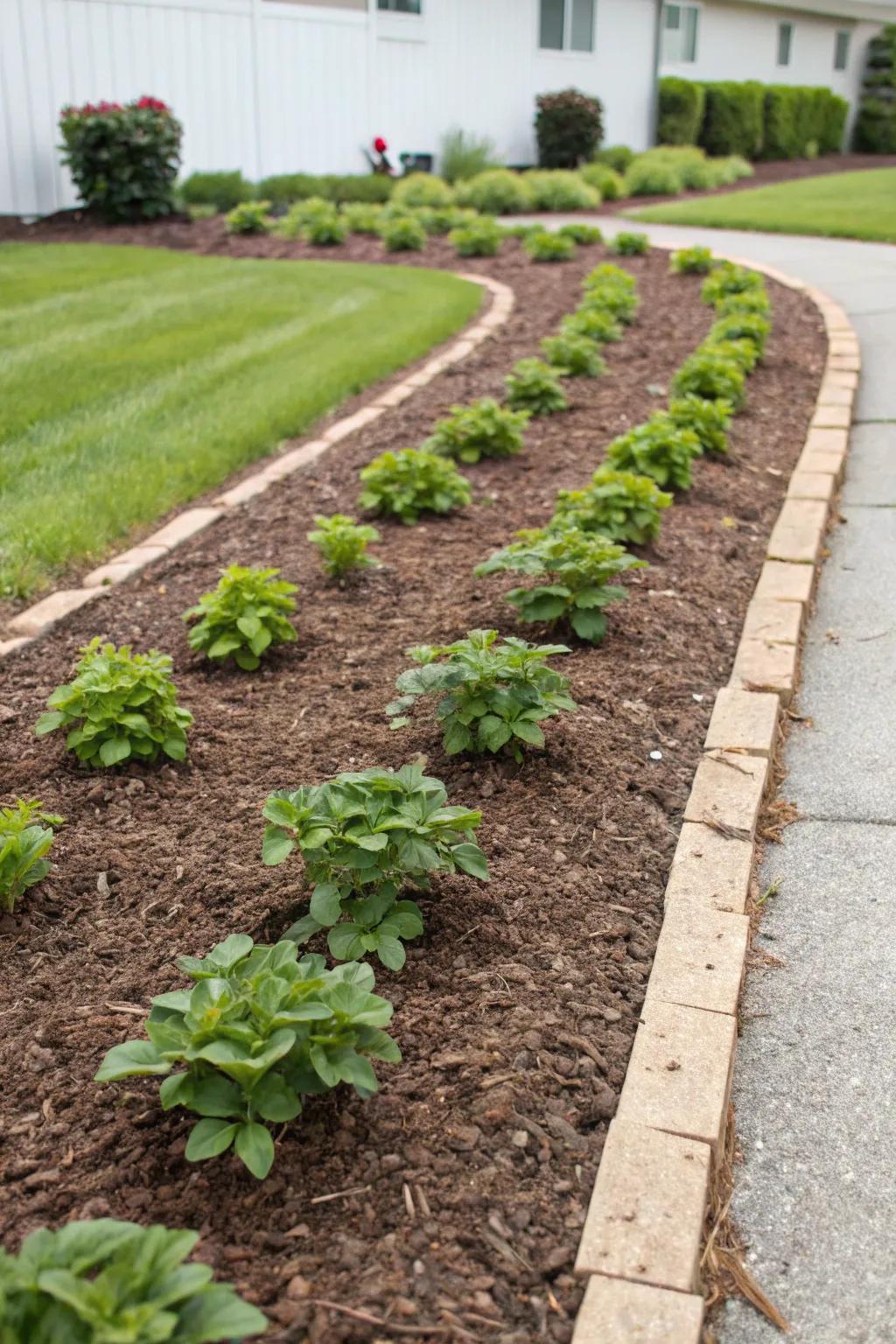
Use symmetry in your mulch bed layout for a neat and orderly appearance. This approach is perfect if you love a classic and balanced garden look.
You might like:
- Decorative Garden Edging Bricks: Create defined edges for a neat, symmetrical garden look with these durable, decorative bricks.
- Balanced Hedge Trimming Tools: Achieve perfect symmetry by using ergonomic tools for precise hedge trimming and shaping.
- Adjustable Garden Hose with Sprayer: Maintain your symmetrical garden bed with this versatile hose providing efficient and targeted watering.
8. Add a Water Feature
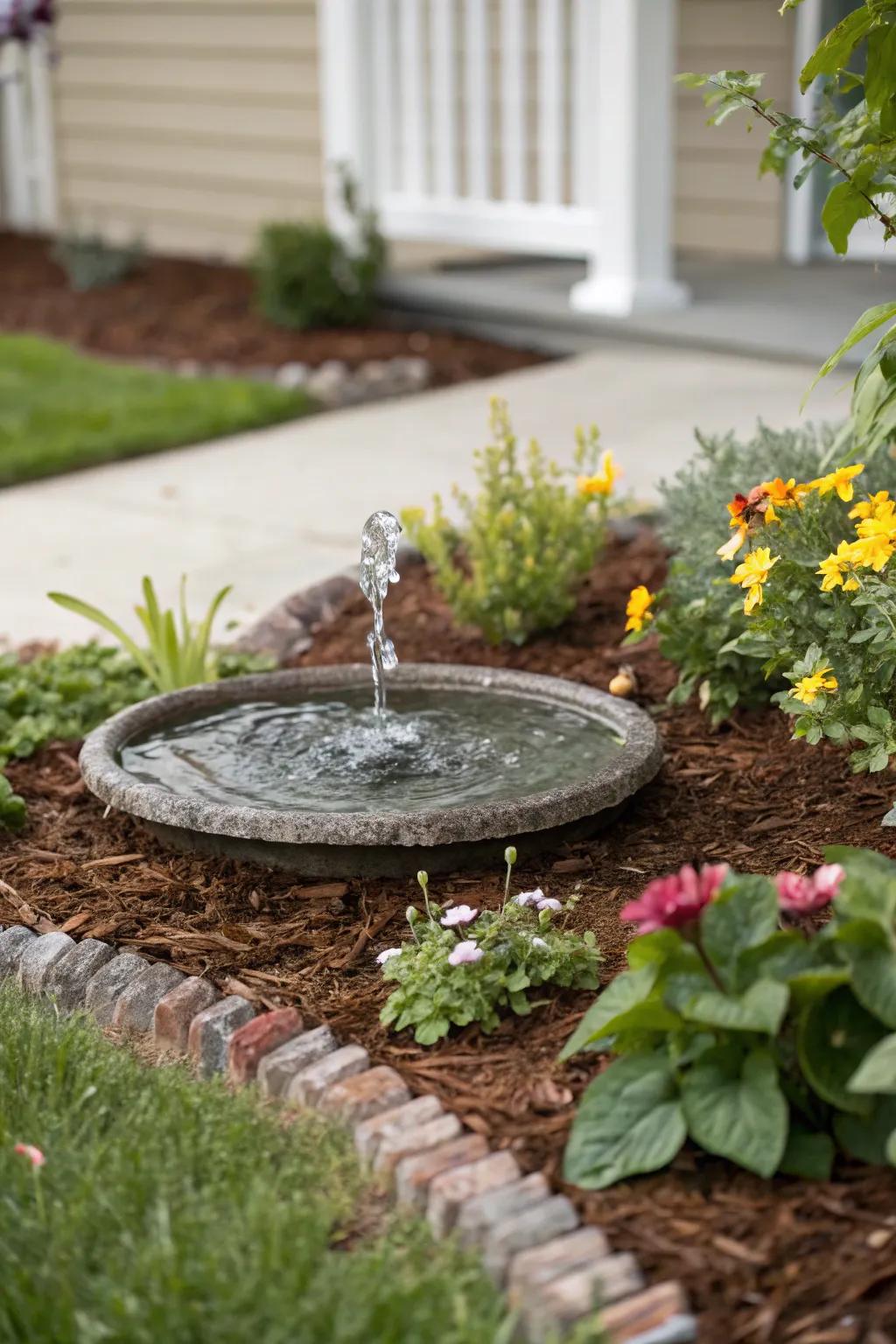
Incorporate a small water feature within your mulch bed for a soothing focal point. Trust me, the sound of water adds a serene ambiance that’s hard to resist.
Useful items to consider:
- Solar Water Fountain Pump: Enhance your garden with a solar water pump for an eco-friendly water feature delight.
- Small Stone Garden Fountain: Integrate a classic stone fountain for a timeless touch and soothing water sounds.
- Bamboo Water Spout and Pump Kit: Add an Asian-inspired bamboo water spout for a relaxing and tranquil garden ambiance.
9. Add Stone Edging
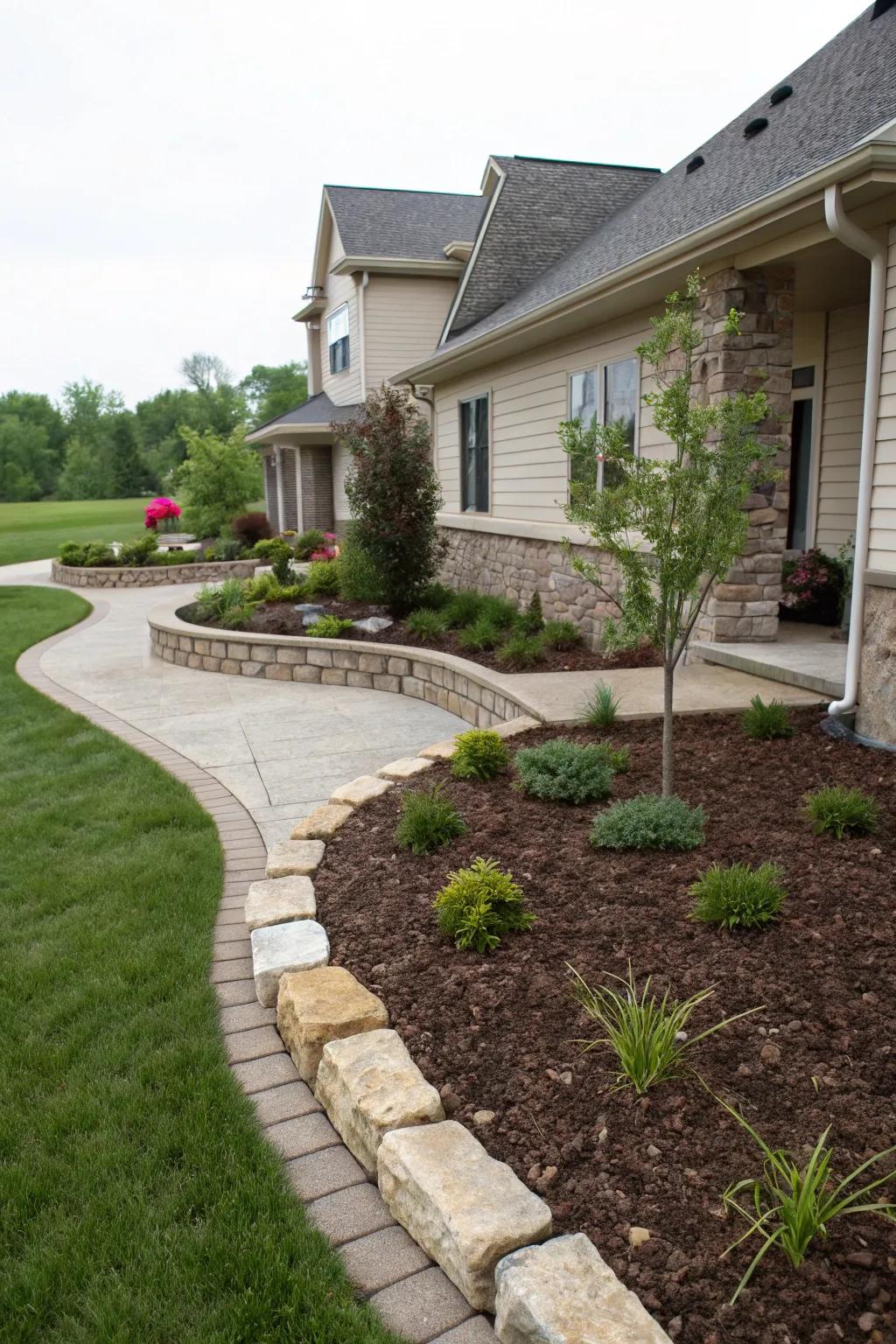
Define your mulch beds with elegant stone edging for a polished and tidy look. I love how this simple addition can elevate the entire landscape vibe.
A few choices to try:
- Natural Stone Garden Edging Kit: Define your mulch beds elegantly with this natural stone kit, adding a polished touch.
- Interlocking Stone Edging Pieces: Easily install interlocking stone edges to enhance your landscape’s visual appeal quickly.
- Weathered Stone Edging Set: Opt for this weathered stone set for a classic and tidy look to your garden borders.
10. Incorporate Lighting
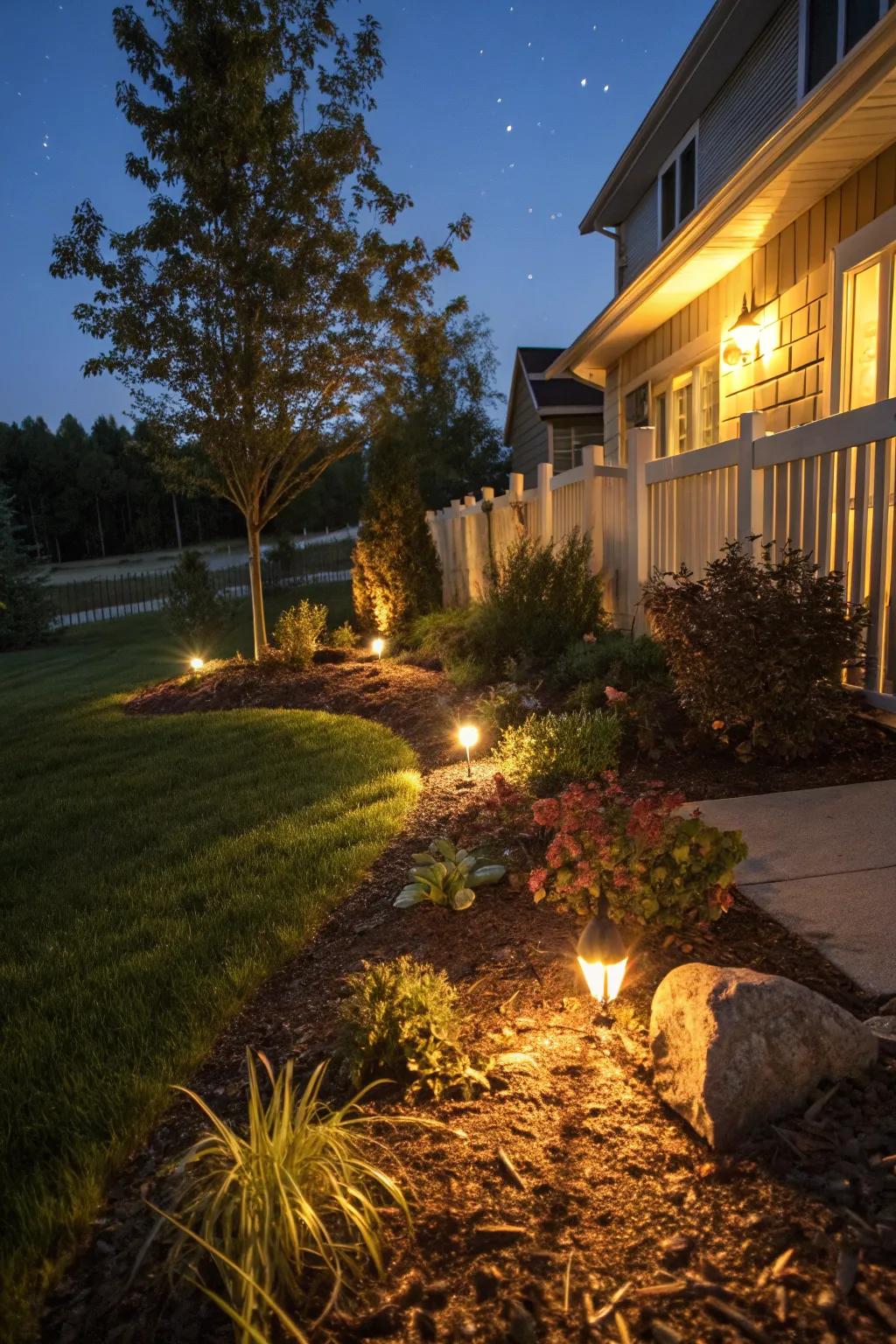
Add landscape lighting to your mulch beds to highlight features at night. I love how lighting transforms a garden into an enchanting nighttime retreat.
These products might be useful:
- Solar Pathway Lights: Illuminate your garden with eco-friendly solar pathway lights for a mesmerizing nighttime ambiance.
- LED Landscape Spotlights: Enhance your landscape features with adjustable LED spotlights for dramatic and inviting illumination.
- Outdoor String Lights: Add charm to your garden with outdoor string lights, perfect for a warm, inviting glow.
11. Create a Colorful Contrast
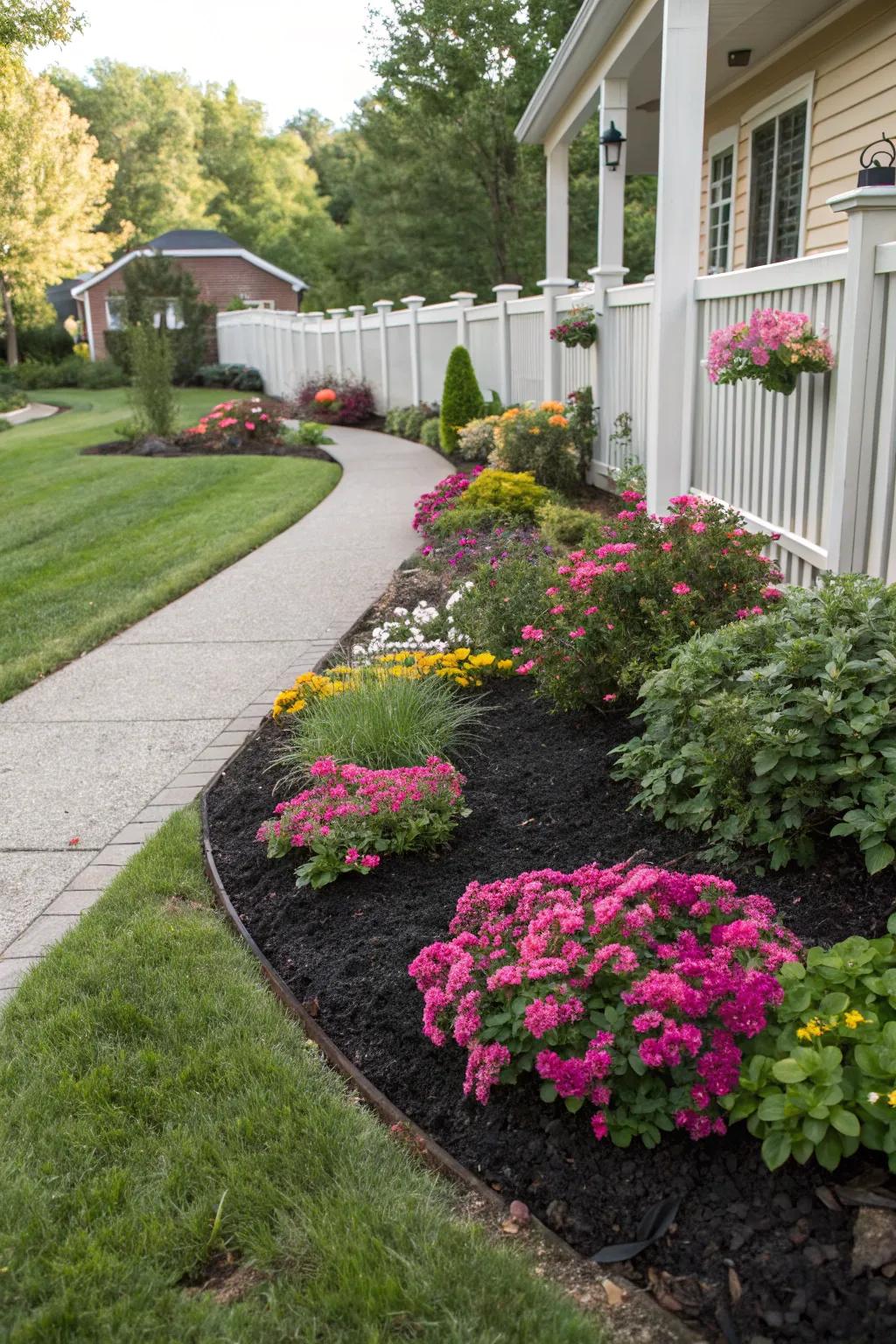
Plant bright flowers against dark mulch for a vibrant contrast that draws the eye. I often use this trick to make my flower beds the star of the show.
You might give these a try:
- Bright Flower Bulb Mix: Add vibrant color to your garden with these easy-to-plant flower bulbs, dazzling for months.
- Dark Premium Mulch: Enhance your flower beds with this rich, dark mulch for striking contrast and moisture retention.
- Adjustable Flower Bed Edging: Create neat, defined borders around your vibrant flower beds with this flexible edging solution.
12. Mix in Seasonal Flowers
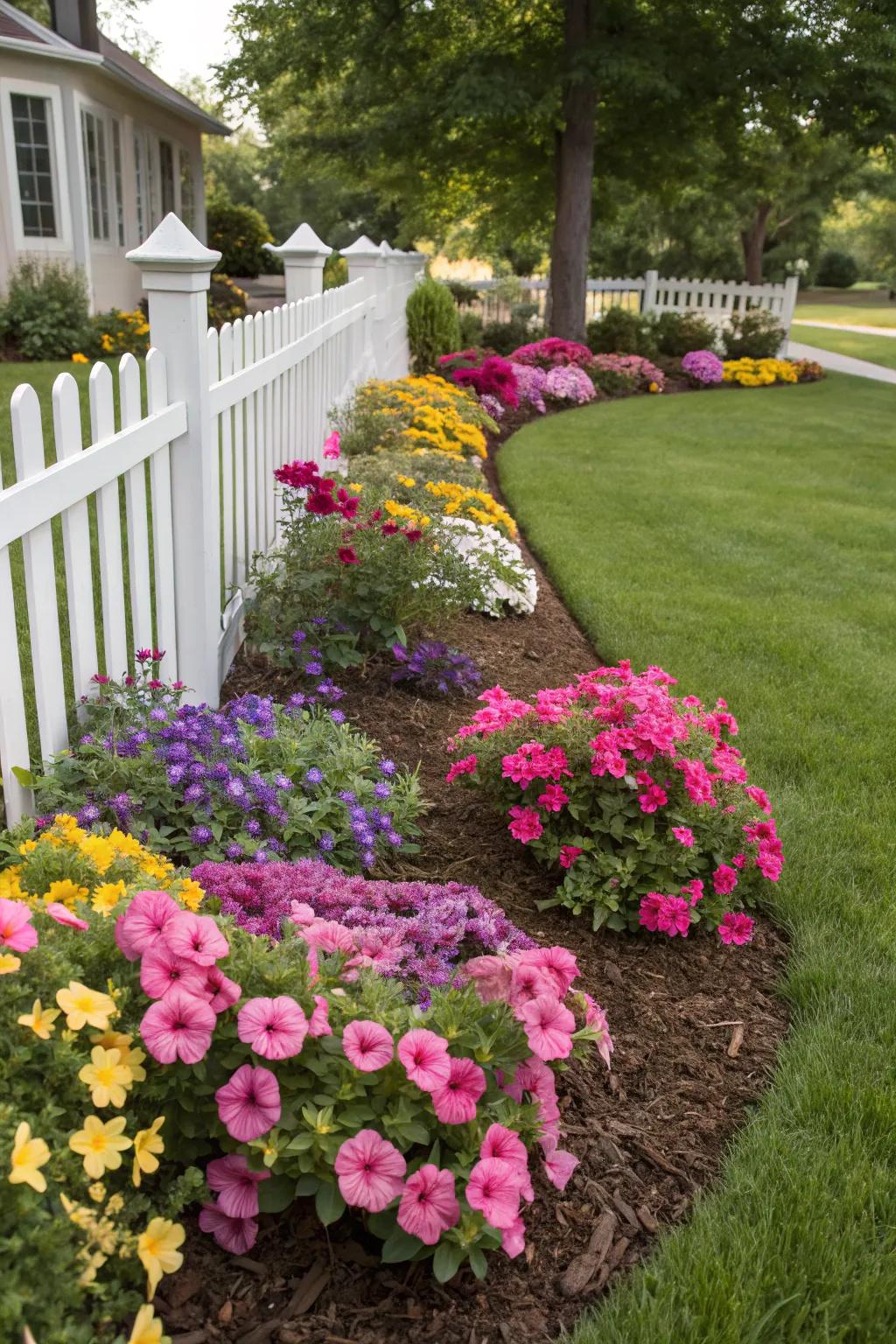
Rotate seasonal flowers in your mulch beds for continuous blooms throughout the year. It’s a strategy I use to keep my garden lively and ever-changing.
Explore these options:
- Assorted Flower Seed Mix: Transform your mulch bed with vibrant blooms using assorted flower seeds for every season.
- Organic Planting Soil: Enhance flower growth in mulch beds with nutrient-rich organic planting soil tailored for vibrant gardens.
- Garden Hand Tool Set: Equip yourself with essential garden tools to easily manage and maintain your beautiful flower beds.
13. Craft an Island Bed
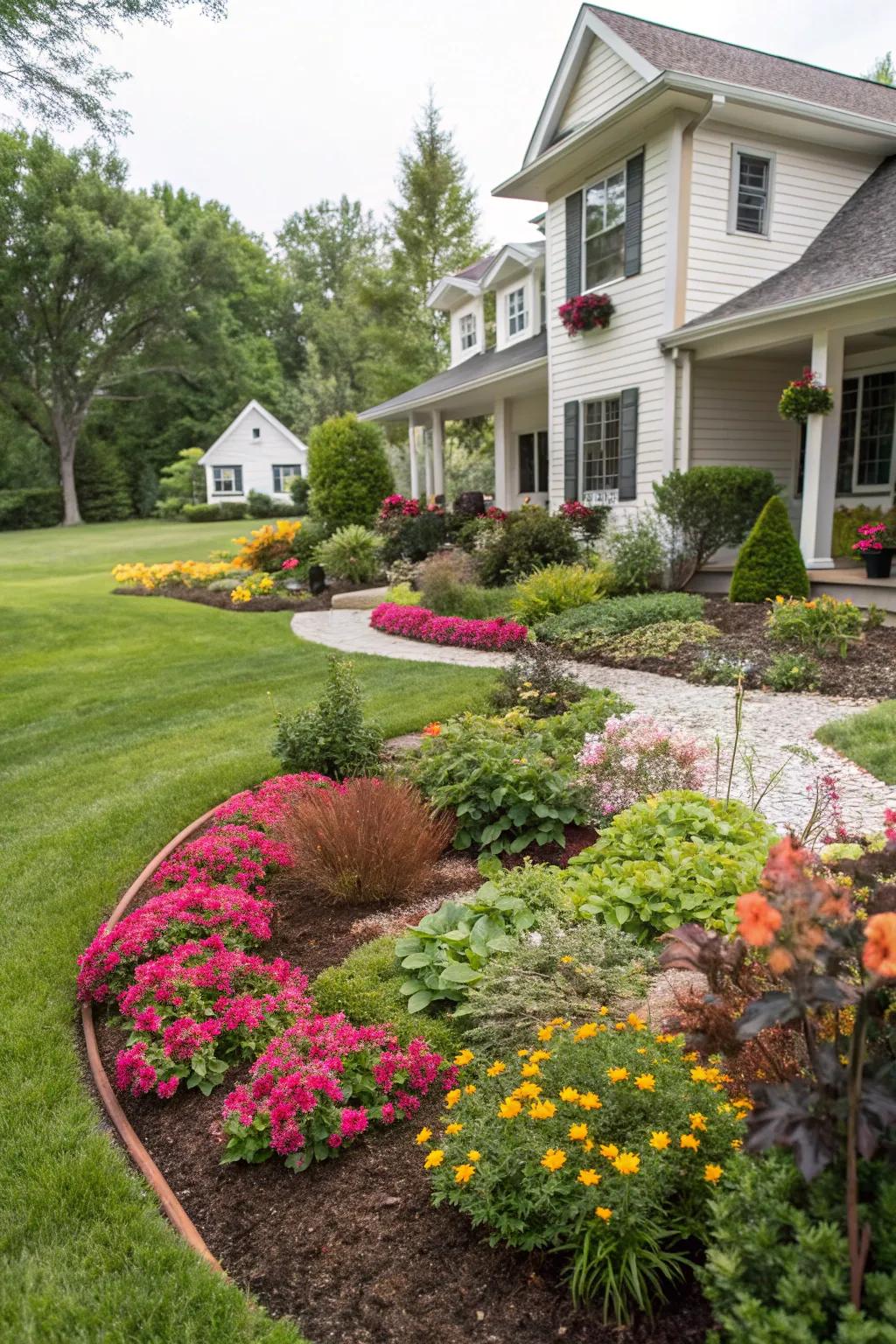
Install an island bed in the center of your lawn for a standalone garden feature. I enjoy how this creates an unexpected focal point in any yard.
Might be a good match:
- Garden Edging Kit: Define your island bed with easy-to-install edging, creating a polished look in minutes.
- Mulch: Enhance soil moisture and curb weeds with high-quality mulch for a vibrant garden bed.
- Perennial Flower Seeds: Bring lasting color to your garden with easy-to-grow perennial flower seeds for blooming beauty.
14. Play with Mulch Colors

Experiment with different mulch colors like rich black or warm brown to create striking contrasts against your plantings. I’ve found that black mulch really makes those vibrant greens pop!
These products might help:
- Black Mulch for Landscaping: Enhance your garden’s vibrancy with black mulch, creating stunning contrasts against lush greenery.
- Brown Mulch for Gardens: Choose brown mulch to add warmth to your garden, complementing natural foliage beautifully.
- Mulch Colorant Spray: Refresh your existing mulch color to maintain a fresh, eye-catching garden appearance effortlessly.
15. Incorporate Ornamental Grasses
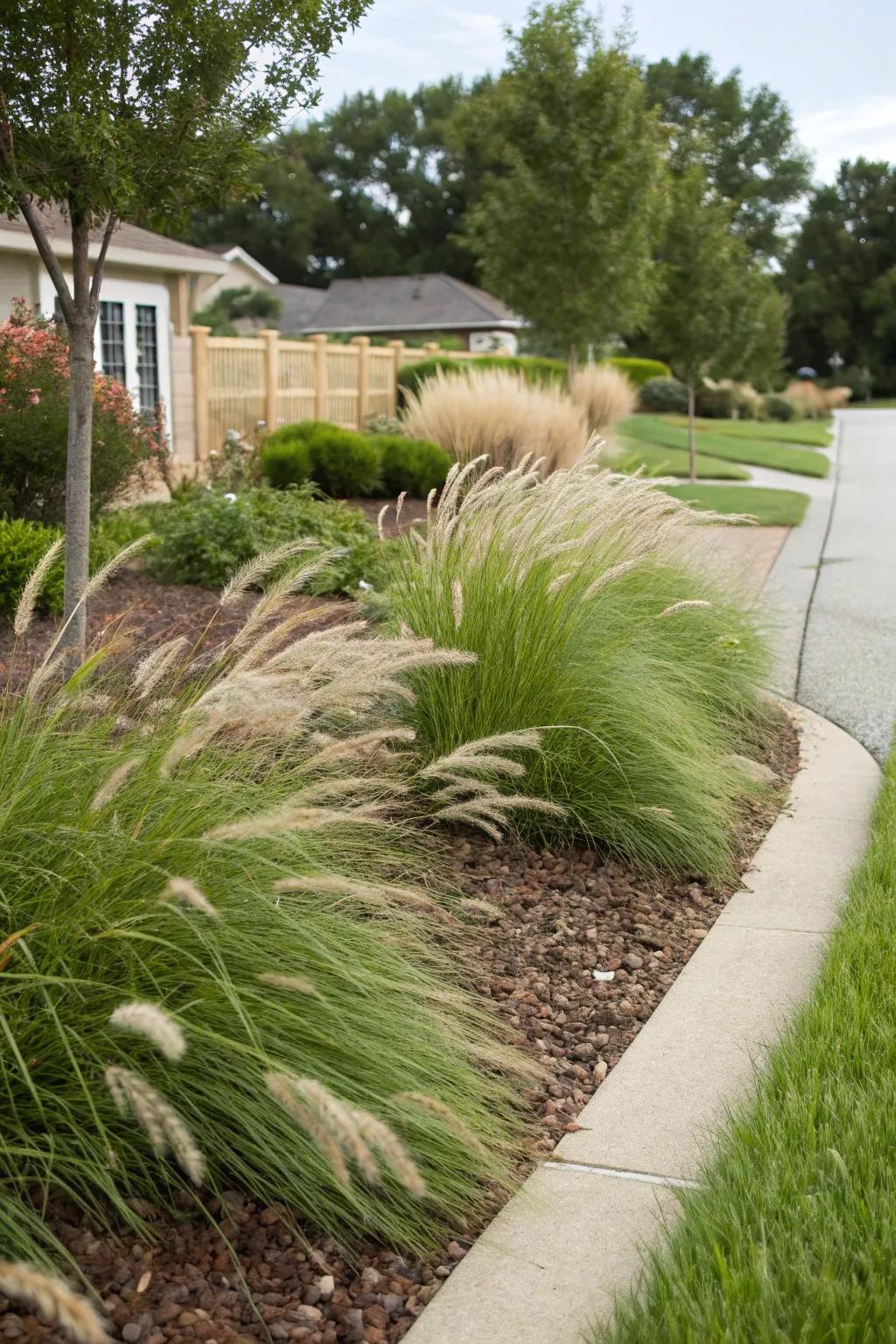
Ornamental grasses add texture and movement to your mulch beds, creating a dynamic design. They’re a personal favorite for infusing life into static spaces.
Some handy options:
- Ornamental Grass Seed Pack: Enhance your garden with vibrant ornamental grass seeds for texture and visual interest.
- Decorative Garden Stone Edging: Define your mulch beds with stylish stone edging for a polished landscape appearance.
- Organic Mulch for Gardens: Improve soil health and retain moisture with premium organic mulch for your garden beds.
16. Embrace Minimalism
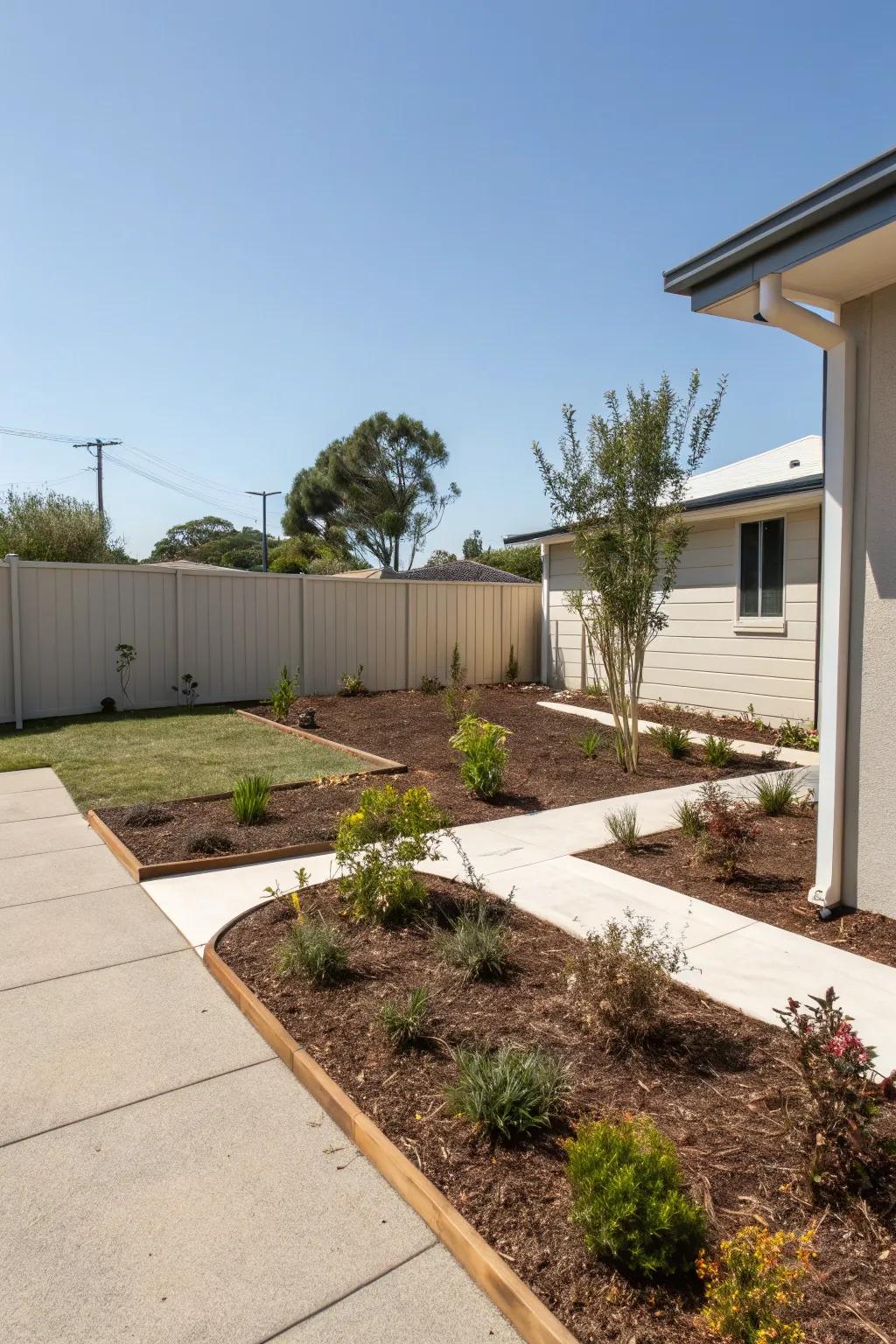
Keep it simple by using a single mulch color with a few select plants for a modern look. I often recommend this for those who prefer a clean and uncluttered aesthetic.
May just do the trick:
- Natural Brown Mulch: Enhance your modern garden with rich, uniform mulch for a clean and simple landscape.
- Low-Maintenance Evergreen Shrubs: Add elegance with easy-care evergreen shrubs that offer year-round beauty and minimal upkeep.
- Wooden Garden Edging: Define your landscape with sleek wooden edging, providing a neat and modern garden finish.
17. Install a Rain Garden

Design a rain garden using mulch to manage water runoff and support native plants. It’s a clever way to blend beauty with environmental mindfulness.
Maybe worth checking out:
- Organic Mulch: Enhance your rain garden’s look and retain moisture naturally with organic mulch.
- Permeable Landscape Fabric: Ensure proper drainage and weed control with durable permeable landscape fabric.
- Native Plant Seed Mix: Grow a lush, eco-friendly garden with a mix of native plant seeds.
18. Design a Tree Ring
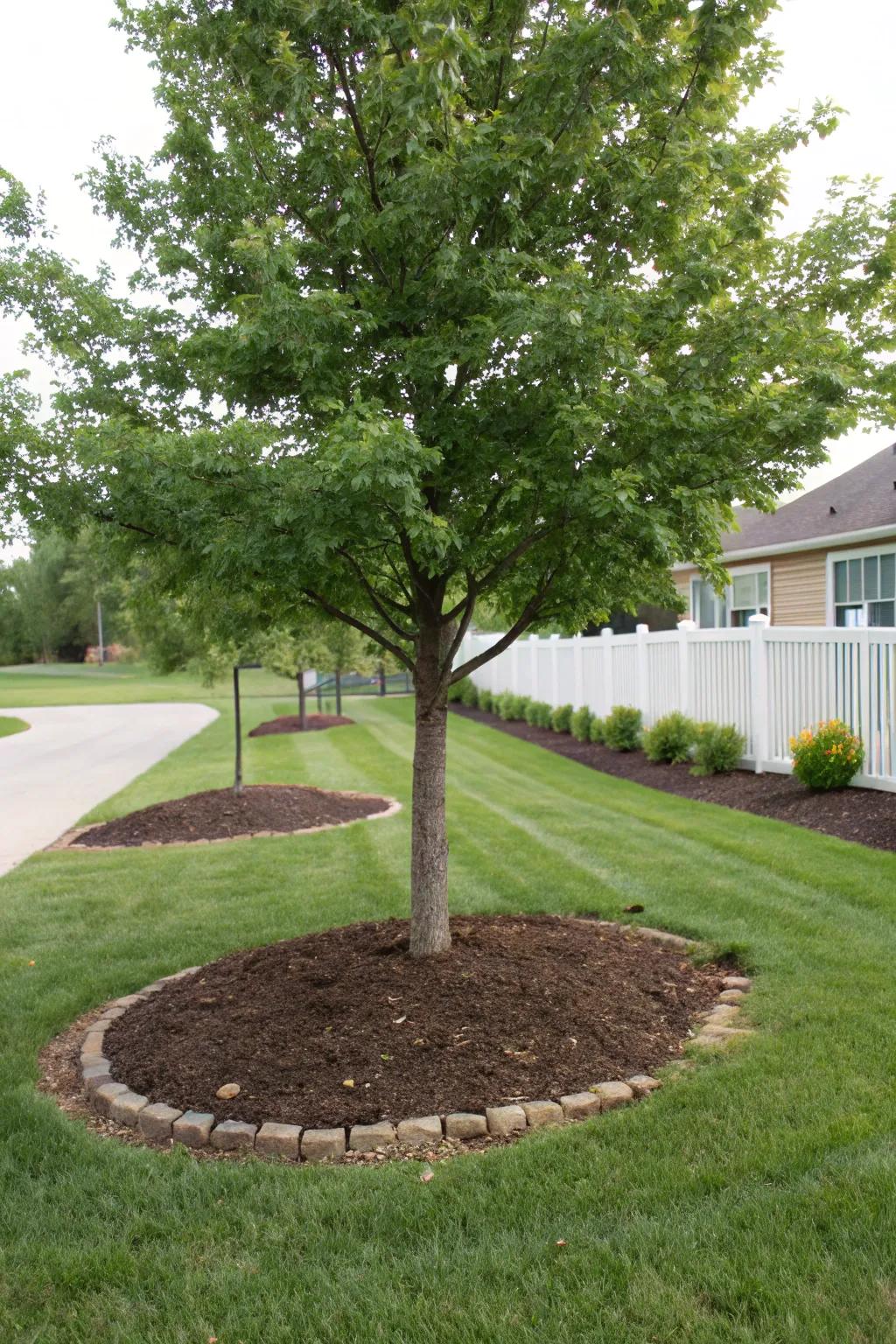
Mulch around the base of a tree to create a neat and health-promoting tree ring. I’ve noticed this simple method can dramatically enhance a tree’s growth.
Items that may come in handy:
- Decorative Garden Edging Stones: Enhance your tree ring with decorative edging stones for a polished and structured appearance.
- Organic Mulch for Trees: Promote healthy growth by applying organic mulch to retain moisture and suppress weeds effectively.
- Garden Weed Barrier Fabric: Use a weed barrier fabric under mulch to keep unwanted plants at bay effortlessly.
19. Create a DIY Rock Garden
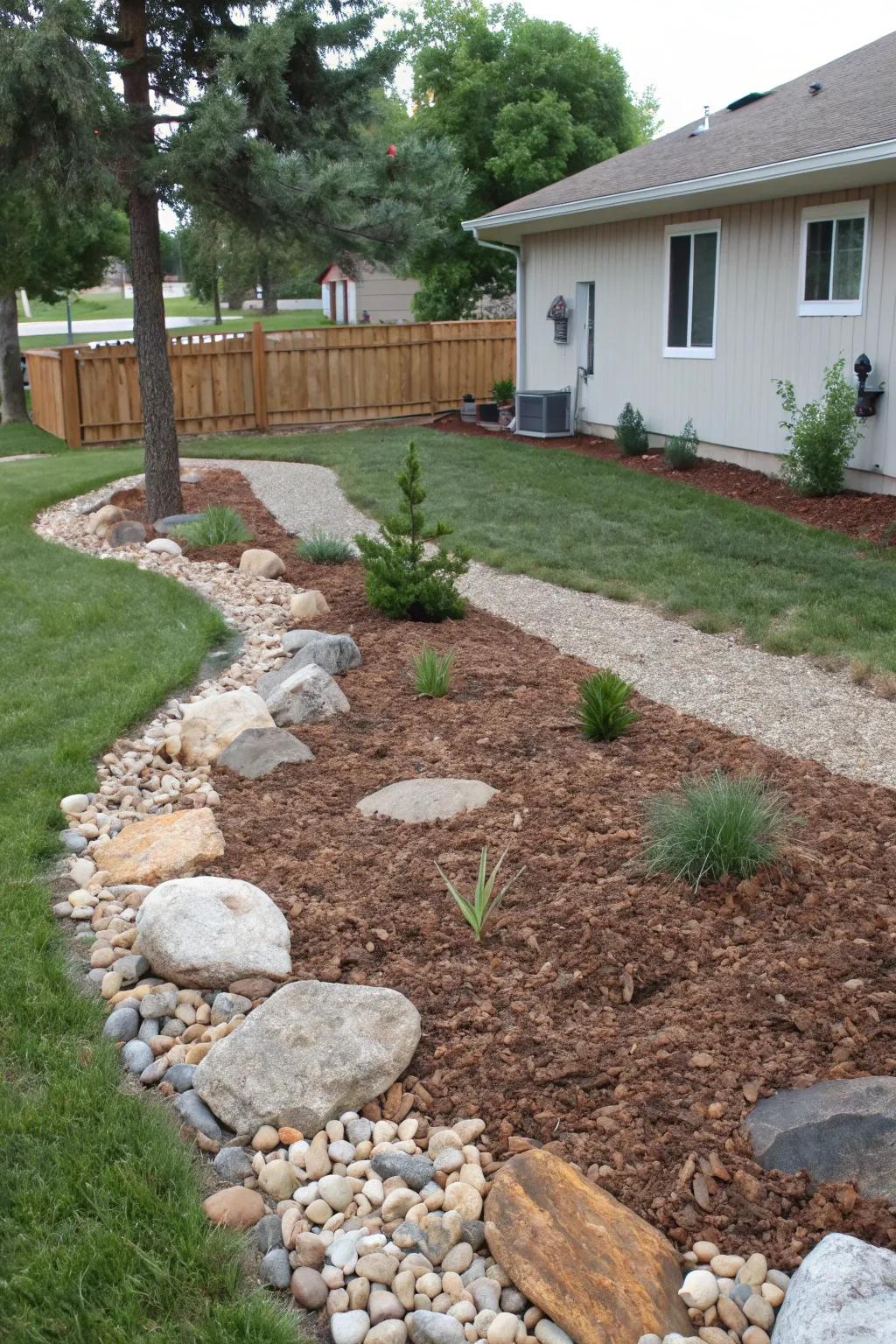
Combine rocks and mulch to form a mini rock garden in your front yard. I’ve turned small spaces into eye-catching features with this simple idea.
Possibly handy products:
- Decorative Landscape Rocks: Enhance your garden’s natural charm with decorative rocks for a stunning visual impact.
- High-Quality Dark Mulch: Add rich, contrasting mulch to your rock garden for improved aesthetics and healthier soil.
- Weather-Resistant Garden Edging: Define your rock garden with durable edging that enhances structure and minimizes maintenance.
20. Add a Seating Area
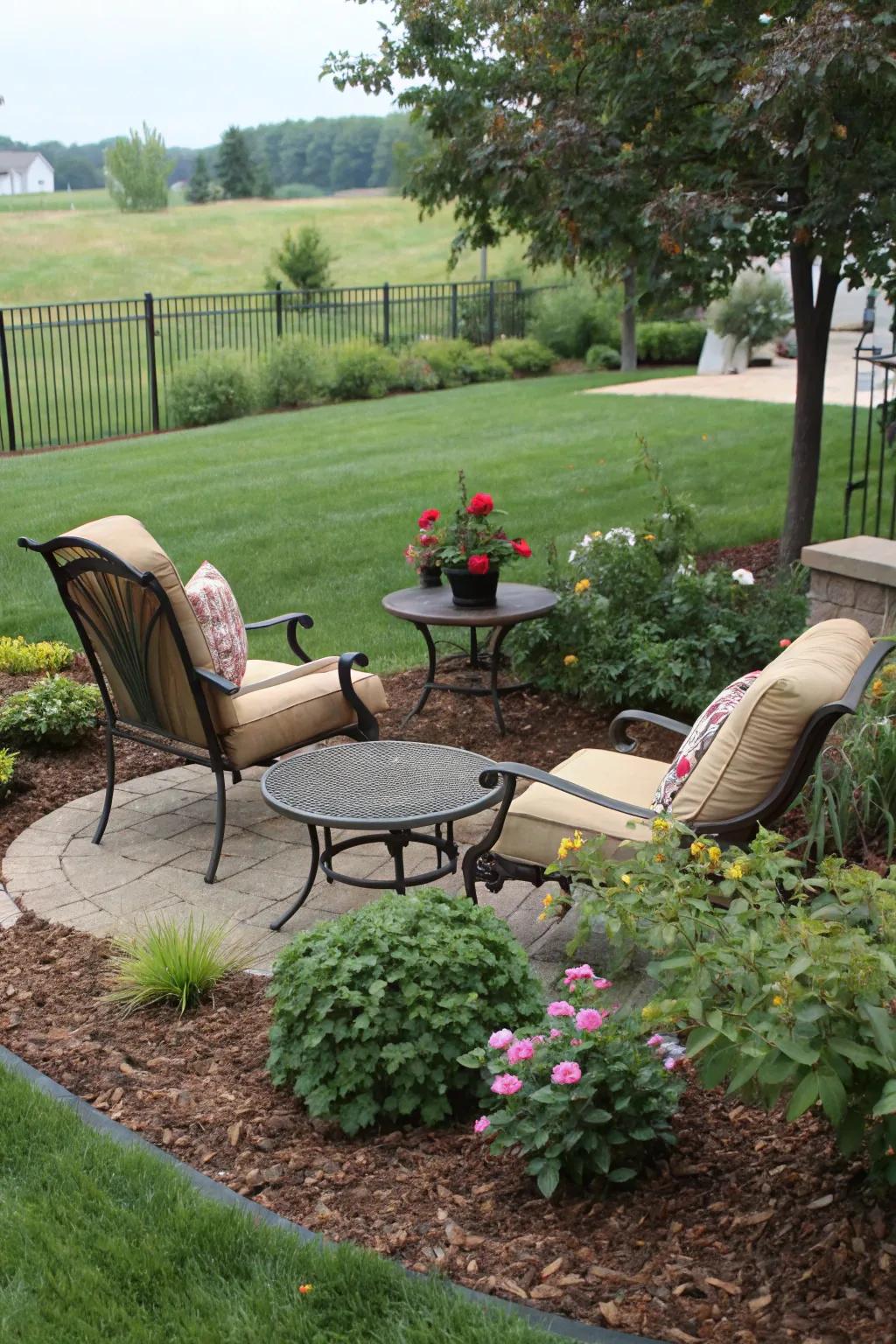
Include a small seating area surrounded by mulch beds for a cozy outdoor nook. This is one of my favorite ways to create a personal retreat right in the front yard.
Try these:
- Outdoor Patio Chairs: Enhance your seating area with comfortable outdoor patio chairs. Perfect for relaxing in style.
- Garden Side Table: Add a stylish garden side table for convenience. Ideal for your books and beverages.
- Outdoor Throw Pillows: Brighten up the seating with colorful outdoor throw pillows. They add comfort and charm.
